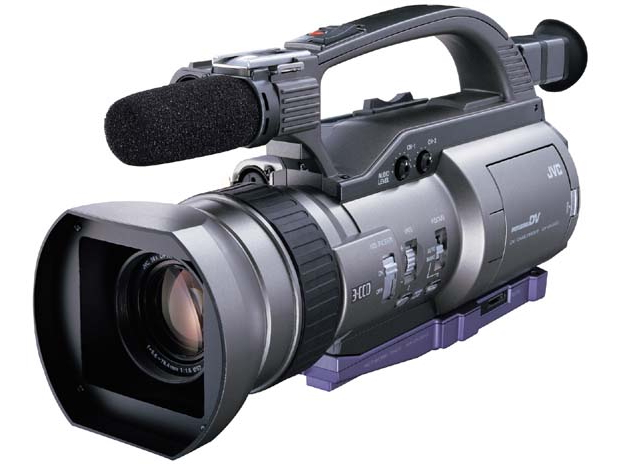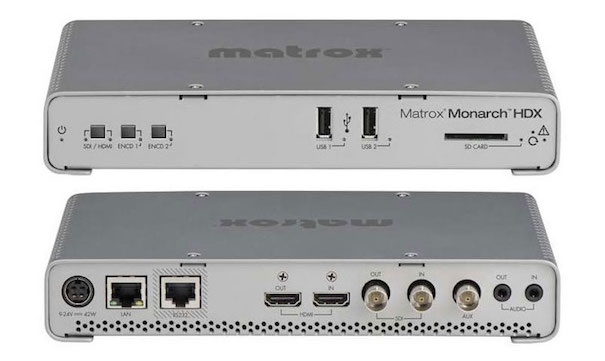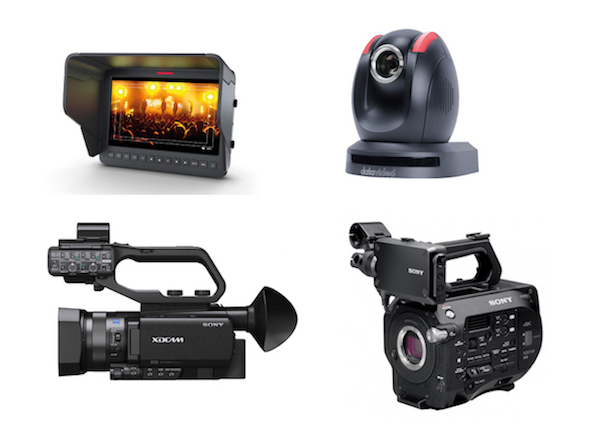A friend asked me yesterday why I had used the term camcorder in a recent article. Another asked about the term worldcam. That’s why I believe it’s a good time to review certain terms, variants, and definitions both in English and in Castilian. The use of compound words is wonderfully powerful in many languages in order to express complex concepts more efficiently. So ahead we’ll cover camera, camcorder, streamcorder, worldcam in English: their origins and recurring use. Later, I’ll show the Castilian versions of these terms I use too.
A friend asked me yesterday why I had used the term camcorder in a recent article. Another asked about the term worldcam. That’s why I believe it’s a good time to review certain terms, variants, and definitions both in English and in Castilian. The use of compound words is wonderfully powerful in many languages in order to express complex concepts more efficiently. So ahead we’ll cover camera, camcorder, streamcorder, worldcam in English: their origins and recurring use. Later, I’ll show the Castilian versions of these terms I use too.
Some powerful compound words in English
You may have already forgotten —or even realized— that some of these were originally separate words:
- cockpit (born from cock + pit, 1580–90)
- corkscrew (born from the combination of cork + screw, 1805–15)
- flashlight (born from the combination flash + light, 1885–90)
- microphone (born from the combination of micro + phone, 1875–80)
- videotape (born from the combination of video and tape. The noun was born in 1953, and the verb in 1958.)
- windshield (born from the combination of wind + shield, 1900–1905)
Ahead we’ll cover the ones related to camera, including camcorder, streamcorder and worldcam. After that, many of the Castilian versions.
Camera, in English
Dictionary.com defines camera as:
- a boxlike device for holding a film or plate sensitive to light, having an aperture controlled by a shutter that, when opened, admits light enabling an object to be focused, usually by means of a lens, on the film or plate, thereby producing a photographic image.
- (in a television transmitting apparatus) the device in which the picture to be televised is formed before it is changed into electric impulses.
- a judge’s private office.
In general use, sometimes people use the term camera to refer to any of the other terms explained ahead, but it becomes more important to use the specific compound words in certain contexts, when we want to clarify what features the camera includes or excludes.
Camcorder, in English
Dictionary.com defines camcorder as:
- a lightweight hand-held television camera with an incorporated VCR, forming a compact self-contained unit.
Obviously, that definition needs to be updated, since most of today’s camcorders no longer use a VCR (video cassette recorder), but some other type of tapeless recorder.
In any case, a camcorder has always been —and remains— a video camera with a built-in (or docked) video recorder. Some people —for import duty classifications— don’t call it a camcorder if it records less than thirty continuous minutes.
The first professional camcorders I recall were Betacam, which were dockable cameras made to dock with a docking Betacam recorder, which used 1/2″ videotape. (That was way before Betacam SP or all of the other digital variants were born). The same thing eventually happened with other videotape formats and docking recorders including MII from Panasonic (which replaced the first M format), D9 (previously called Digital S) from JVC, and S-VHS. There were even docking versions of professional cameras that could be docked to a recorder from a different manufacturer, either directly or via a special adapter. Then, inseparable camcorders came out with many of those analog videotape formats, followed by inseparable camcorders which used digital videotape formats. But even in the age of videotape based camcorders, tapeless dockable recorders started to arrive to the market to offer any of the following, depending upon the case: higher quality recording, direct-to-tape editing without the much slower, realtime ingest of the videotape into a non-linear editing system, or just a simultaneous backup. The first such tapeless recorders were from Videoonics and Shining. JVC sold one that was an OEM from Videonics. Nowadays, they are available from companies like AJA, Átomos, Blackmagic, Convergent Design and Video Devices, and I have reviewed several of them.
In my recent 4-camera shootout in-studio with greenscreen & TriCaster virtual set (illustrated above), two of the cameras were camcorders (with built-in recorders: Sony PXW-X70 & PXW-FS7) and two were just cameras, without any inboard recorder. Those were the Blackmagic Studio Camera (review coming soon) and the Datavideo PTC–150 robotic camera.
Streamcorder, in English

The first time I ever read or heard the term Streamcorder was in the palindromic year of 2002, when JVC Professional introduced its GY-DV300 and its companion KA-DV300U network package (illustrated above). The GY-DV300 by itself was a Professional DV camcorder which recorded on Mini DV videotape, but it was also designed to accept the optional KA-DV300U module, which encoded the camera’s signal into MPEG4 for live streaming and recording on a CF card. It had a PCMCIA slot for wired or wireless networking. This combination was released over a year before the final drafting work on the first version of the H.264 standard (a much more mature evolution of MPEG–4) was completed in May 2003. JVC hired me to demonstrate this combination at NAB the year it debuted.
Nowadays, many consumer and some professional camcorders are also streamcorders (with a lowercase s) as shipped from the factory (including the Sony PXW-X70 I have covered in several articles), although many of their streaming capabilities are often much more limited than what can be accomplished by docking a professional Teradek encoder. (I’ll be covering those differences in upcoming articles.)
In addition to JVC’s original use of Streamcorder (with uppercase S) to describe the GY-DV300 with the KA-DV300U, and the general use of streamcorder (all lowercase) to describe a camera with inboard or added streaming capabilities, I have also noticed Advanced Micro Peripherals offers its StreamCorder-SD4 card, which the company describes as an intelligent, stand-alone, H.264 streaming and recording solution that accepts 4x composite video sources and records and streams them over 100/1000 megabit per second Ethernet.

In all lowercase, we could call Matrox’s Monarch HDX (illustrated above) a streamcorder, since it encodes H.264 for streaming and it records onto an SD card. So the word streamcorder doesn’t have to be limited to a camera.
WorldCam, in English
A WorldCam (when used by Sony) or worldcam is a camera that is capable of imaging (and in the case of a camcorder, also recording) all popular framerates which have been derived from the old analog formats called NTSC and PAL. A segregated camera marketed primarily for the PAL or ex-PAL regions generally includes framerates like 25 and 50. (Those segregated cameras may sometimes also include 23.976, although it may be rounded in the menu as “24”.) A segregated camera sold primarily for the NTSC or ex-NTSC regions generally include framerates like 29.97 and 59.94. They may also include 23.976 and/or exact 24. Some cameras like all Blackmagic cameras I’ve seen to date, Panasonic’s AG-DVX200, and Sony’s PXW-X70 are shipped as worldcam. Others are segregated forever, while yet others can be upgraded to worldcam via a firmware update, either free or paid. In past articles, I have covered many of those cases.
Long live compound words! The rest of this article will cover similar terms and compound camera words in Castilian.
Algunas palabras compuestas en castellano
- aerolínea
- parabrisas
- parachoques
- paraguas
- pasabordo (Hasta ahora, he escuchado y he leído esta palabra con aerolíneas colombianas. Aplaudo a la persona que la creó.)
- pasaporte
- sacacorchos
- sacapuntas
- videocinta
- videograbadora
Sin la ayuda de estas palabras compuestas, sería mucho más tedioso expresar estos conceptos. A continuación veremos algunas palabras compuestas que incluyen la palabra cámara.
La camadora o camascopio, en castellano

En mi reciente artículo Comparación de 4 cámaras en estudio con fondo verde y escenario virtual TriCaster (ilustrado arriba), dos de las cámaras eran camadoras (con grabadora incorporada: las PXW-X70 y PXW-FS7 de Sony) y dos eran solo cámaras, sin ninguna grabadora incorporada. Ésas fueron la Blackmagic de estudio (pronto publicaré la reseña) y la PTC–150 robótica de Datavideo.
En el castellano de las Américas, las palabras más populares que se utilizan para describir una máquina que graba video (se escribe video sin tilde en las Américas y vídeo con tilde en España. El Diccionario castellano de la Real Academia Española ya ha aceptado ambas versiones, como verás aquí) es grabador, grabadora, videograbador o videograbadora. Durante la época de la videocinta, la palabra más utilizada en España para referirse a una videograbadora era magnetoscopio. (de magneto- y -scopio visualizar). Aquí hay un excelente artículo en Wikipedia que cubre este término como se usaba en castellano ibérico.
Todo esto ha sido un preámbulo para explicar el origen de las palabras compuestas camadora y camascopio. Antes de decidirme crear la palabra compuesta camadora en los años 90, ya había observado la palabra camascopio entre los españoles. Dicha palabra era tanto desconocida como inapropiada en las Américas, porque aquí en las Américas no se usaba siquiera la palabra magnetoscopio. La palabra compuesta camadora que formé en los años 90 sigue siendo completamente válida, pero la palabra camascopio ya casi olvidada en España no es apropiada para referirse a una cámara que graba sin cintas, porque las tarjetas que usamos para grabar hoy en día no emplean magnetismo para grabar. Ya es hora que los españoles adopten mi término camadora también para referirse a una cámara con grabadora incorporada
La fluxadora, en castellano

En el año capicúa del 2002, poco después del momento que la empresa JVC lanzó su palabra compuesta Streamcorder para referirse a su GY-DV300 y KA-DV300U y me contrató para demostrarlos en la expoconferencia NAB en Las Vegas, vi la necesidad de crear la palabra compuesta equivalente en castellano. Antes de eso, ya había concluido que la palabra inglesa streaming —cuando causamos que una señal audiovisual fluya continuamente— debía llamarse fluxión, ya que la fluxión es precisamente la acción y efecto de crear y causar un flujo. De hecho, al Diccionario castellano de la Real Academia ya había reconocido mi uso de la palabra fluxión en su tercera acepción. Sólo hace falta que la Academia reconozca que dicha tercera acepción se encuentra viva y coleando: ya no está en desuso
Habiendo reconocido las palabras ya existentes camadora y fluxión, me resultó tanto fácil como lógico crear la palabra fluxadora para referirnos a una camadora que además cuenta con la capacidad de realizar fluxión. Pero la palabra fluxadora no se limita al uso estricto con cámaras.

Por ejemplo, la Monarch HDX de Matrox (ilustrada arriba) es una fluxadora enfocada para webdifundir desde mezcladores de video que no cuentan con la capacidad propia de fluxión (o desde una cámara única).
¡Vivan las palabras compuestas! ¡Viva el castellano!
Upcoming articles, reviews, and books
Stand by for upcoming articles, reviews, and books. Sign up to my free mailing list by clicking here.
Si deseas suscribirte a mi lista en castellano, visita aquí. Si prefieres, puedes suscribirte a ambas listas (castellano e inglés).
Books, consulting, articles, seminars & radio programs
Contact Allan Tépper for consulting, or find a full listing of his books, articles and upcoming seminars and webinars at AllanTepper.com. Listen to his CapicúaFM program at CapicúaFM.com in iTunes or Stitcher.
My latest book (paperback + ebook)

My most recent book is available in two languages, and in paperback as well as an ebook. The ebook format is Kindle, but even if you don’t have a Kindle device, you can read Kindle books on many other devices using a free Kindle app. That includes iPad, Android tablets, Mac computers, and Windows computers. Although generally speaking, Kindle books are readable on smartphones like Androids and iPhones, I don’t recommend it for this particular book since it contains both color photos and color comparison charts. The ebook is also DRM-free.
In English, it’s The Castilian Conspiracy. Click here and you will be automatically sent to the closest Amazon book page to you based upon your IP address. Or request ISBN–10: 1456310232 or ISBN–13: 978–1456310233 in your favorite local bookstore.
En castellano, se llama La conspiración del castellano. Haz clic aquí para llegar al instante a la página del libro correspondiente a tu zona y moneda en Amazon, según tu dirección IP. De lo contrario, solicítalo en tu librería preferida con los ISBN–10: 1492783390 ó el ISBN–13: 978–1492783398.
FTC disclosure
No manufacturer is specifically paying Allan Tépper or TecnoTur LLC to write this article or the mentioned books. Some of the other manufacturers listed above have contracted Tépper and/or TecnoTur LLC to carry out consulting and/or translations/localizations/transcreations. Many of the manufacturers listed above have sent Allan Tépper review units. So far, none of the manufacturers listed above is/are sponsors of the TecnoTur programs, although they are welcome to do so, and some are, may be (or may have been) sponsors of ProVideo Coalition magazine. Some links to third parties listed in this article and/or on this web page may indirectly benefit TecnoTur LLC via affiliate programs.
Copyright and use of this article
The articles contained in the TecnoTur channel in ProVideo Coalition magazine are copyright Allan Tépper/TecnoTur LLC, except where otherwise attributed. Unauthorized use is prohibited without prior approval, except for short quotes which link back to this page, which are encouraged!

Filmtools
Filmmakers go-to destination for pre-production, production & post production equipment!
Shop Now















